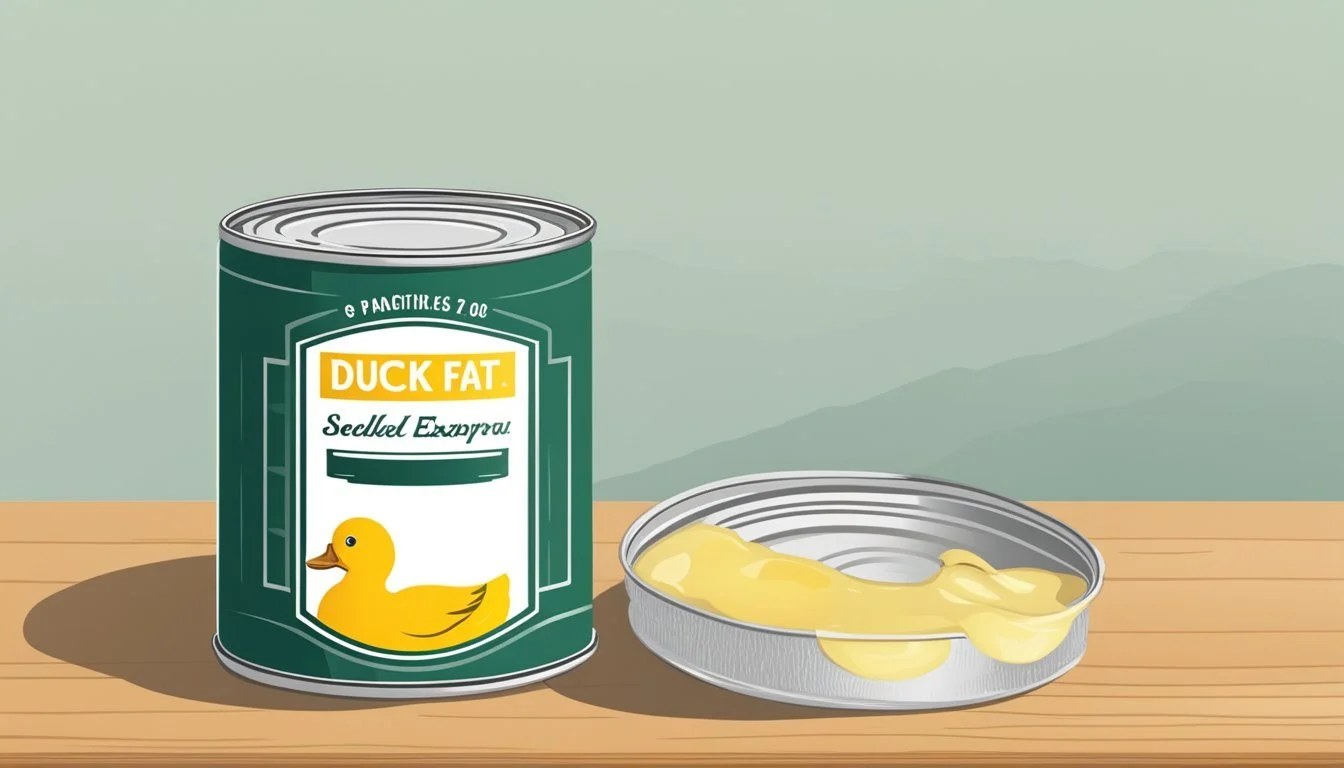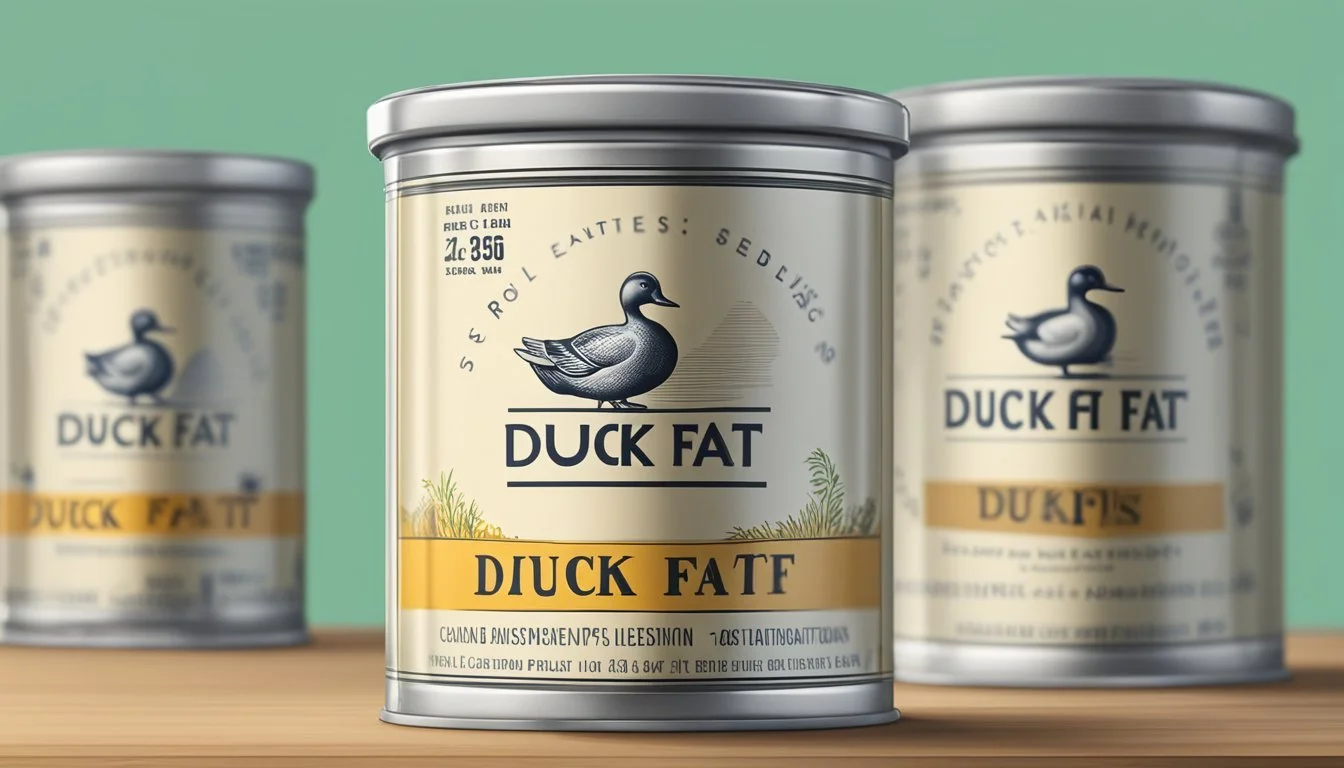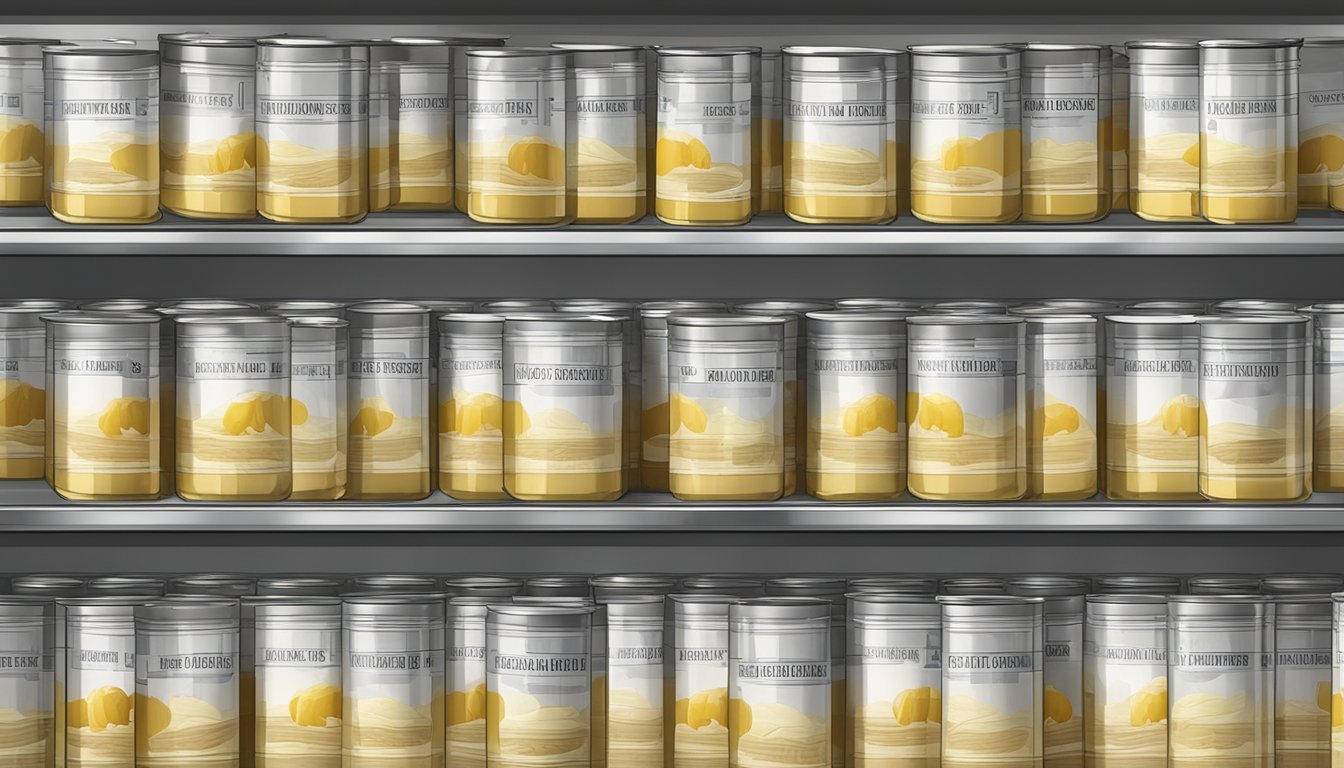How Long Does Canned Duck Fat Last?
Shelf Life and Storage Tips
Canned duck fat is prized for its rich flavor and versatility in the kitchen. Unlike other animal fats, duck fat provides a distinct taste that enhances everything from roasted potatoes to confit preparations. When it comes to shelf life, the stability of duck fat is notable. Properly canned and unopened, it can maintain its quality for quite some time.
Since duck fat is less prone to oxidation compared to other fats, it resists rancidity, which is a common cause of spoilage. When kept in a cool, dark place, canned duck fat's shelf life can extend significantly. Consumers often inquire about the longevity of duck fat stored under these conditions and whether its quality persists over time.
Storage conditions are pivotal to extending canned duck fat's longevity. Once opened, it should be refrigerated in an airtight container to minimize exposure to air and heat, which can accelerate spoilage. In the refrigerator, opened canned duck fat can last up to six months without significant quality loss. For long-term storage, freezing can further preserve its properties, potentially extending its usability for up to a year or even more, ensuring that it remains a kitchen staple ready for future culinary uses.
Understanding Duck Fat
Duck fat is a cooking fat known for its rich flavor and versatile use in the kitchen. It is appreciated not only for its taste but also for its favorable fat composition.
Characteristics of Duck Fat
Duck fat is primarily composed of monounsaturated and saturated fats. It has a lower content of saturated fat, at approximately 33%, compared to butter's 51%. This gives duck fat a softer texture at room temperature. It is well-known for its savory flavor, which enhances the taste profiles of various dishes. Its high smoke point also makes it particularly useful for frying and roasting, safeguarding the flavor and quality even when subjected to high temperatures.
Health Benefits
The monounsaturated fats predominant in duck fat may contribute to better cardiovascular health. Compared to some other animal fats, it is often seen as a healthier option due to this fat composition. It is important to note, however, that moderation is key as it is still a dense source of calories and fats.
Culinary Uses
Duck fat is integral to French cuisine and is utilized across various cooking methods. Its versatility allows it to be used for:
Confit: Duck meat is slowly cooked in its own fat, tenderizing the meat and intensifying its natural flavor.
Roasting: Vegetables and potatoes roasted in duck fat absorb its distinct taste and achieve a crispy exterior.
Sauteing: Duck fat can be used to saute ingredients, imparting a depth of flavor to dishes that other fats cannot.
This cooking fat's unique characteristics make it suitable for achieving perfectly textured and flavor-enhanced culinary creations.
Proper Storage Methods
To ensure the longevity and quality of canned duck fat, one must follow proper storage methods involving the right choice of container, temperature control, and measures against oxidation.
Container Selection
An airtight container is imperative when storing duck fat to prevent moisture and air from spoiling the fat. Glass or plastic containers with tight-sealing lids are suitable options. Once the canned duck fat is opened, it should be transferred to an airtight container if not used entirely.
Refrigeration Vs. Freezing
Duck fat can be kept at room temperature when sealed in its original, unopened can. However, once opened, refrigerating the duck fat is crucial for prolonging its shelf-life. In the refrigerator, duck fat typically lasts from 3 to 6 months. For extended storage, freezing is advisable as it can preserve duck fat for over a year.
Refrigeration: Duck fat will solidify and can easily be scooped as needed.
Freezing: Duck fat can be portioned and frozen, making it convenient to use directly in cooking.
Protection from Oxidation
Oxidation can degrade the quality of duck fat, affecting its taste and freshness. To protect the duck fat from oxygen exposure:
Ensure the lid of the container is always sealed tightly after each use.
Minimize the container's headspace to reduce the amount of air in contact with the fat.
Consider using a layer of parchment paper pressed directly on the surface of the fat before sealing the container to create an additional barrier against air.
By adhering to these storage methods, the quality and lifespan of duck fat can be effectively preserved.
Shelf Life and Preservation
The shelf life of canned duck fat is influenced by storage conditions and sound preservation techniques. Proper handling can significantly extend its usability, ensuring the fat remains suitable for culinary uses.
Expected Shelf Life
Canned duck fat typically lasts up to six months when stored in the refrigerator. It remains stable due to its high saturated fat content, which resists spoilage. If unopened and kept in a freezer, its shelf life can extend up to a year or more.
Signs of Spoilage
Duck fat that has gone bad usually presents clear indicators:
Rancid Smell: A prominent off-odor unlike the mild aroma of fresh duck fat.
Change in Taste: Tasting slightly is enough to detect unusual flavors.
Discoloration: Any hints of gray or green, and the presence of mold signify spoilage.
Texture: A non-smooth texture can indicate that it's best not to consume the fat.
Extending Duck Fat Lifespan
To maximize the lifespan of duck fat, consider the following:
Refrigeration: Always store duck fat in a cool environment, ideally at the back of the refrigerator.
Airtight Container: Minimize oxidation by storing it in an airtight container, limiting exposure to air.
Freezing: For long-term storage, freeze duck fat, either in its original container or in airtight packaging.
By following these guidelines, one can ensure duck fat remains a high-quality addition to dishes for extended periods.
Practical Tips for Usage
Canned duck fat offers culinary enthusiasts a versatile ingredient for enhancing flavors and textures in a variety of dishes. Proper usage of this ingredient can elevate the simplest recipes to gourmet levels.
Cooking and Roasting
When cooking or roasting, duck fat's high smoke point makes it ideal for achieving crispy and golden results. Chefs often use it for roasting potatoes to perfection with a savory taste that is hard to replicate with other oils.
Potatoes: Toss them in duck fat before roasting to obtain a crunchy exterior and a fluffy interior.
Vegetables: Roasted vegetables get an umami-rich boost when lightly coated in duck fat before baking.
Reusing and Recycling Duck Fat
Duck fat can be reused several times if stored properly, which makes it an eco-friendly and cost-effective choice.
After cooking, strain the fat through a fine-mesh to remove food particles.
Store the clean duck fat in an airtight container in the refrigerator for reuse.
Enhancing Flavors
For those looking to amplify the flavors in their dishes, infusing the duck fat with herbs or combining it with the juices of roasted poultry can impart a rich, savory depth.
Herbs: Infuse duck fat with rosemary or thyme to create a flavor base that's excellent for baking bread or basting meats.
Meats: Brushing a thin layer of duck fat on meats before cooking can enhance the natural flavors and tenderize the exterior.
Frequently Asked Questions
In this section, readers will find crucial information on identifying spoiled duck fat, best practices for cooking with it, and its health implications.
How to Identify Rancid Duck Fat
One can recognize rancid duck fat by its off odor and the presence of mold or discoloration. Duck fat should have a clean, neutral smell; any sour or unpleasant odors indicate spoilage. Additionally, visible mold or changes in color are other definitive signs that the duck fat should not be consumed.
Best Cooking Practices
When using duck fat, cooking at temperatures below its smoke point is key to maintaining its quality and preventing degradation. The smoke point of duck fat is typically around 375°F (190°C), making it suitable for medium-high heat cooking methods like frying and roasting. Keep the duck fat in an airtight container in the back of the refrigerator to minimize oxidation.
Storage: Airtight container, refrigerated
Smoke Point: Approximately 375°F (190°C)
Usage: Ideal for frying and roasting
Health Implications
Although duck fat is a staple in gourmet cooking, one must keep in mind its saturated fat content. Containing less saturated fat than butter, duck fat has about 33% saturated fat content, which is still considerable. Consuming high amounts of saturated fat can affect cardiovascular health and increase LDL cholesterol levels. One should use duck fat in moderation, balancing it with unsaturated fats to maintain a diverse and healthy diet.
Saturated Fat Content: Around 33%
LDL Cholesterol: High intake may increase LDL levels
Dietary Balance: Use in moderation
Buying and Labeling Insights
When purchasing canned duck fat, consumers should prioritize obtaining high-quality products and comprehend the significance of labels. These aspects are crucial for ensuring food safety and maximizing shelf life.
Where to Buy Quality Duck Fat
Butcher Shops: Consumers aiming for premium quality often turn to local butcher shops. Butchers typically source from reputable farms, ensuring the duck fat is of high purity and quality.
Farmers Markets: Farmers markets are another ideal location for purchasing duck fat. These markets often offer products directly from the producers, providing fresh and less processed options.
Understanding Labels and Expiration
Labeling: Accurate labeling on canned duck fat provides crucial information about the contents, including the presence of pure duck fat without additives. It is important for consumers to read these labels to verify the quality of the product.
Expiration Date: The expiration date on a can of duck fat is a key indicator of its shelf life. Consumers should always check this date to ensure the product is within its freshness period, which impacts both flavor and food safety.
By honing in on these specific entities, consumers can make informed decisions leading to safer and more satisfying use of canned duck fat.
Creative Uses in the Kitchen
Utilizing canned duck fat in the kitchen can elevate many dishes with its luxurious flavor and versatility. It not only enhances the taste but also introduces a new texture to various recipes.
Recipes Beyond Roasting
Duck fat goes well beyond its traditional use of roasting meats. Bakers may find it a delightful addition in baked goods and pastries, where it can impart a unique depth of flavor and create a flakier and richer crust. Imagine a classic pie with a twist — a pie crust with duck fat can lend recipes a more complex flavor profile.
Savory Pies: Substitute butter with duck fat in the dough for a richer taste.
Popcorn Topping: Drizzle melted duck fat over popcorn for an upscale cinema treat.
Vinaigrettes: Whisk duck fat into vinaigrettes for a fuller-bodied dressing.
Duck Fat as a Substitute
In many recipes, duck fat can serve as a luxurious substitute for standard cooking oils or butter. Chefs often use it to infuse a touch of elegance into everyday meals.
French Fries: To achieve the ultimate crispy exterior and tender interior, duck fat can replace standard oils in deep-frying french fries.
Sautéing: Replace vegetable oil with duck fat when sautéing vegetables for an enriched flavor that complements the natural tastes.
Spread: Use duck fat as an alternative to butter on artisan breads for a tasteful boost.
Utilizing duck fat as a replacement in various cooking methods can impart a rich, savory quality that is challenging to replicate with other fats.
Duck Fat Storage Life FAQ
Proper storage of duck fat is crucial for maintaining its quality and longevity. Whether opened or sealed, duck fat has distinct storage times which maximize freshness and ensure food safety.
How Long to Keep Opened Duck Fat
Once opened, duck fat should be kept in the refrigerator to prevent spoilage and contamination. An opened container of duck fat can last up to six months when stored correctly in the refrigerator. To extend its shelf life, one should:
Make sure the duck fat is fully covered, minimizing contact with air.
Use a clean, airtight container.
Freeze Duck Fat for Long-Term Use
For those who wish to store duck fat beyond the six-month refrigeration period, freezing is a suitable option. Duck fat can be safely frozen, and its stability in the freezer makes it less prone to rancidity. Key tips for freezing duck fat include:
Store duck fat in an airtight container or well-sealed freezer bags to prevent freezer burn.
Clearly label with the freezing date; although duck fat can last indefinitely in the freezer, for best quality, use within a year.
Thaw only the needed amount to prevent thawing and refreezing, which can compromise the fat's texture and taste.








